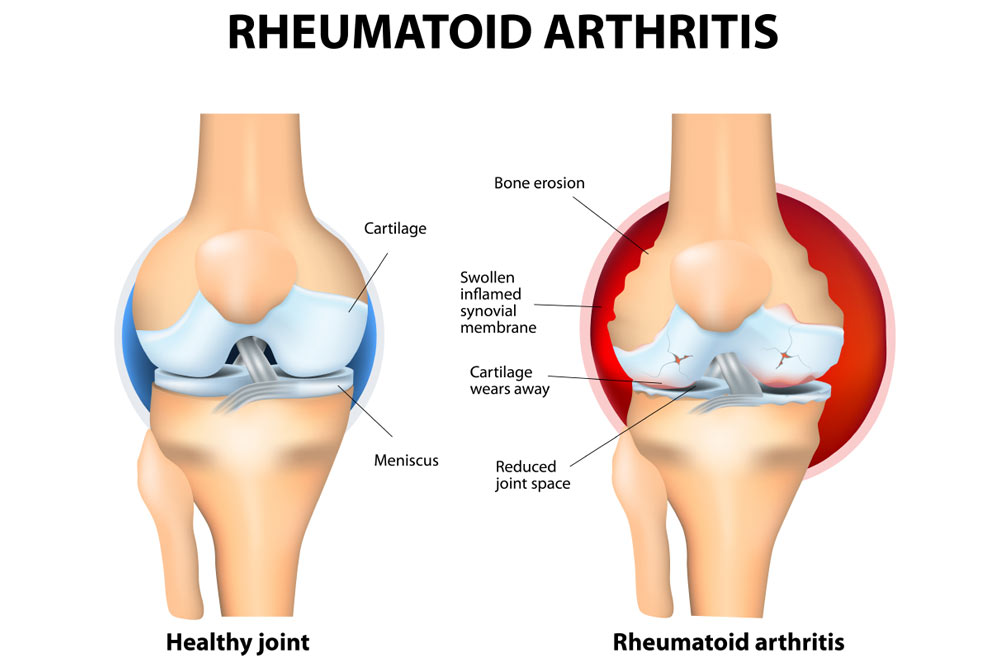- Home
- Rheumatoid Arthritis (RA)
Rheumatoid Arthritis (RA)
Rheumatoid Arthritis ( RA )
Rheumatoid arthritis is a chronic disease that attacks multiple joints throughout the body, including the knee joint. It is symmetrical, meaning that it usually affects the same joint on both sides of the body.
In rheumatoid arthritis, the synovial membrane that covers the knee joint begins to swell. This results in knee pain and stiffness.
Rheumatoid arthritis is an autoimmune disease. This means that the immune system attacks its own tissues. The immune system damages normal tissue (such as cartilage and ligaments) and softens the bone.

Symptoms
A knee joint affected by arthritis may be painful and inflamed. Generally, the pain develops gradually over time, although sudden onset is also possible. There are other symptoms, as well:
- The joint may become stiff and swollen, making it difficult to bend and straighten the knee.
- Pain and swelling may be worse in the morning, or after sitting or resting.
- Vigorous activity may cause pain to flare up.
- Loose fragments of cartilage and other tissue can interfere with the smooth motion of joints. The knee may “lock” or “stick” during movement. It may creak, click, snap or make a grinding noise (crepitus).
- Pain may cause a feeling of weakness or buckling in the knee.
- Many people with arthritis note increased joint pain with changes in the weather.
BOOK AN APPOINTMENT
“KNEEO Technique” For Knee Replacements
Doctor Examination
During your appointment, your doctor will talk with you about your symptoms and medical history, conduct a physical examination, and possibly order diagnostic tests, such as x-rays or blood tests.
Physical Examination
During the physical examination, your doctor will look for:
- Joint swelling, warmth, or redness
- Tenderness around the knee
- Range of passive (assisted) and active (self-directed) motion
- Instability of the joint
- Crepitus (a grating sensation inside the joint) with movement
- Pain when weight is placed on the knee
- Problems with your gait (the way you walk)
- Any signs of injury to the muscles, tendons, and ligaments surrounding the knee
- Involvement of other joints (an indication of rheumatoid arthritis)
Imaging Tests
- X-rays. These imaging tests provide detailed pictures of dense structures, such as bone. They can help distinguish among various forms of arthritis. X-rays of an arthritic knee may show a narrowing of the joint space, changes in the bone, and the formation of bone spurs (osteophytes).
- Other tests. Occasionally, a magnetic resonance imaging (MRI) scan or a computerized tomography (CT) scan may be needed to determine the condition of the bone and soft tissues of your knee.
Recovery
After any type of surgery for arthritis of the knee, there is a period of recovery. Recovery time and rehabilitation depends on the type of surgery performed.
Your doctor may recommend physical therapy to help you regain strength in your knee and to restore range of motion. Depending upon your procedure, you may need to wear a knee brace, or use crutches or a cane for a time.
In most cases, surgery relieves pain and makes it possible to perform daily activities more easily.


